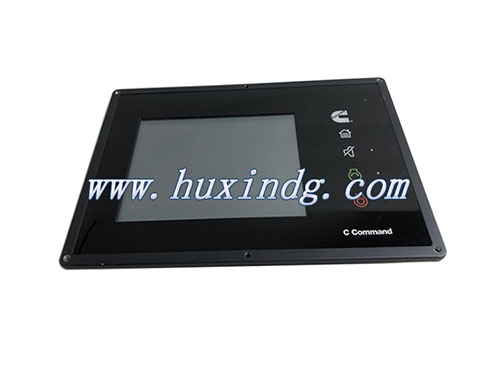
The development trend of the electronic control system of intelligent generator sets
The development trend of the electronic control system for intelligent generator sets is rapidly evolving towards digitalization, intelligence, networking and greenness to meet the energy demands of high efficiency, reliability and environmental protection. The following are the main development trends:
Digital and intelligent control
AI and machine learning optimize operation
By analyzing historical operation data through artificial intelligence (AI) algorithms, the load distribution of generator sets and fuel injection strategies are optimized to enhance efficiency and reduce emissions.
Machine learning models can predict potential faults (such as bearing wear and fuel injector blockage), achieving Predictive Maintenance.
Adaptive control technology
The electronic control system (ECU) can dynamically adjust parameters (such as air-fuel ratio and ignition timing) according to environmental temperature, altitude, fuel quality, etc., to ensure the efficient operation of the unit under different working conditions.
Edge computing applications
Deploy edge computing capabilities on local devices (such as ECUs) to reduce cloud reliance and achieve real-time response (such as millisecond-level fault protection).
2. Integrated and modular design
Multi-functional integrated ECU
Traditional distributed control (such as independent fuel control and speed regulation modules) is developing towards highly integrated ECUs, integrating functions such as power generation control, grid connection management, and battery management (hybrid power).
For example, the coordinated control of diesel generator sets and photovoltaic/energy storage systems is managed by the same ECU.

Standardized communication protocol
High-speed bus protocols such as CAN FD and Ethernet/IP are adopted to enhance the data transmission rate and support the real-time interaction of more sensors and actuators.
Compatible with IEC 61850 (Power Automation Standard), it is convenient to connect with the smart grid.
3. Remote monitoring and cloud platform management
IoT and cloud-edge collaboration
The unit data is uploaded to the cloud platform (such as Siemens MindSphere and Schneider EcoStruxure) through 5G/NB-IoT to achieve remote monitoring and fault diagnosis worldwide.
Support Digital Twin technology. The virtual model synchronously reflects the status of the physical unit and is used for simulation optimization.
Application of blockchain technology
In the context of distributed energy, blockchain can record power generation data and maintain records to ensure that the data cannot be tampered with (such as carbon emission trading verification).
4. Green, low-carbon and hybrid energy control
Multi-energy integration control
The intelligent electronic control system needs to manage the mixed operation of diesel generator sets, fuel cells, lithium battery energy storage, and renewable energy (photovoltaic/wind power) to achieve optimal energy dispatching.
For example: In a microgrid, the ECU automatically switches energy sources based on electricity prices and load demands.
Low emissions and carbon neutrality
Integrated post-treatment control systems (such as SCR urea injection and DPF regeneration), meeting the National VI/Euro VI emission standards.
Support the adaptive control of new energy sources such as hydrogen fuel engines and synthetic fuels (e-fuels).
5. Enhanced safety and reliability
Functional Safety
Comply with ISO 13849 (mechanical safety) and IEC 61508 (electrical safety) standards, and prevent system failure through redundant design (dual ECUs, multi-sensor verification).
For example, key signals (such as rotational speed and oil pressure) are collected through a dual-channel approach.
Network security protection
The electronic control system needs to prevent network attacks (such as DoS attacks and data tampering), and adopt technologies such as TLS encrypted communication and hardware security modules (HSM).
6. Human-computer interaction and AR/VR support
Augmented reality (AR) assisted maintenance
The location of the fault point and the repair steps are displayed through AR glasses, reducing the reliance on professionals.
Voice and gesture control
Support natural language interaction (such as voice commands to start and stop the unit) to enhance operational convenience.
Future challenges
Complexity of technology integration: Multi-energy collaborative control poses higher requirements for algorithms and hardware.
Data privacy and compliance: Cross-border data flows must comply with regulations such as GDPR.
Cost control: The popularization of high-end intelligent systems requires a balance between performance and cost.
Summary
The core development direction of the electronic control system for intelligent generator sets is "smarter, more interconnected and greener". In the future, it will deeply integrate AI, IoT and new energy technologies and become a key node of the smart energy network. Enterprises need to pay attention to the three major dimensions of standardization, security and sustainability in order to maintain technological leadership.



